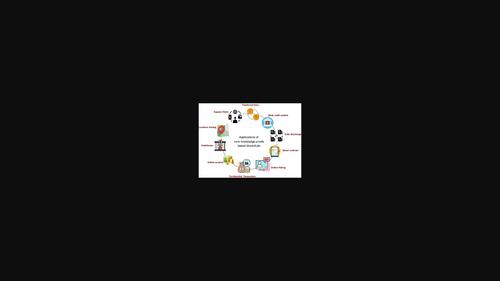当前位置:
X-MOL 学术
›
Trans. Emerg. Telecommun. Technol.
›
论文详情
Our official English website, www.x-mol.net, welcomes your
feedback! (Note: you will need to create a separate account there.)
Blockchain and artificial intelligence for 5G-enabled Internet of Things: Challenges, opportunities, and solutions
Transactions on Emerging Telecommunications Technologies ( IF 2.5 ) Pub Date : 2021-07-14 , DOI: 10.1002/ett.4329 Ashutosh Dhar Dwivedi 1 , Rajani Singh 2 , Keshav Kaushik 3 , Raghava Rao Mukkamala 2 , Waleed S. Alnumay 4
Transactions on Emerging Telecommunications Technologies ( IF 2.5 ) Pub Date : 2021-07-14 , DOI: 10.1002/ett.4329 Ashutosh Dhar Dwivedi 1 , Rajani Singh 2 , Keshav Kaushik 3 , Raghava Rao Mukkamala 2 , Waleed S. Alnumay 4
Affiliation

|
Internet of Things (IoT) has revolutionized the digital world by connecting billions of electronic devices over the internet. IoT devices play an essential role in the modern era when conventional devices become more autonomous and smart. On the one hand, high-speed data transfer is a major issue where the 5G-enabled environment plays an important role. On the other hand, these IoT devices transfer the data by using protocols based on centralized architecture and may cause several security issues for the data. Merging artificial intelligence to 5G wireless systems solves several issues such as autonomous robots, self-driving vehicles, virtual reality, and engender security problems. Building trust among the network users without trusting third party authorities is the system's primary concern. Blockchain emerged as a key technology based on a distributed ledger to maintain the network's event logs. Blockchain provides a secure, decentralized, and trustless environment for IoT devices. However, integrating IoT and blockchain also has several challenges; for example, major challenge is low throughput. Currently, the ethereum blockchain network can process approximately 12 to 15 transactions per second, while IoT devices require relatively higher throughput. Therefore, blockchains are incapable of providing functionality for a 5G-enabled IoT based network. The limiting factor of throughput in the blockchain is their network. The slow propagation of transactions and blocks in the P2P network does not allow miners and verifiers to fastly mine and verify new blocks, respectively. Therefore, network scalability is the major issue of IoT based blockchains. In this work, we solved the network scalability issue using blockchain distributed network while to increase the throughput of blockchain, this article uses the Raft consensus algorithm. Another most important issue with IoT networks is privacy. Unfortunately, the blockchain distributed ledgers are public and sensitive information is available on the network for everyone are private, but in such cases, third party editing is not possible without revealing the original contents. To solve privacy issues, we used zkLedger as a solution that is based on zero knowledge-based cryptography.
中文翻译:

5G 物联网的区块链和人工智能:挑战、机遇和解决方案
物联网 (IoT) 通过互联网连接数十亿电子设备,彻底改变了数字世界。当传统设备变得更加自主和智能时,物联网设备在现代发挥着至关重要的作用。一方面,高速数据传输是一个主要问题,其中5G支持的环境发挥着重要作用。另一方面,这些物联网设备使用基于集中式架构的协议传输数据,可能会导致数据的一些安全问题。将人工智能与 5G 无线系统相结合可以解决自主机器人、自动驾驶车辆、虚拟现实等多个问题,并产生安全问题。在不信任第三方机构的情况下在网络用户之间建立信任是该系统的首要关注点。区块链作为一种基于分布式账本的关键技术而出现,用于维护网络的事件日志。区块链为物联网设备提供了一个安全、去中心化且无需信任的环境。然而,集成物联网和区块链也面临一些挑战;例如,主要挑战是吞吐量低。目前,以太坊区块链网络每秒大约可以处理 12 到 15 笔交易,而物联网设备需要相对更高的吞吐量。因此,区块链无法为基于 5G 的物联网网络提供功能。区块链吞吐量的限制因素是其网络。 P2P 网络中交易和区块的缓慢传播不允许矿工和验证者分别快速挖掘和验证新区块。因此,网络可扩展性是基于物联网的区块链的主要问题。在这项工作中,我们使用区块链分布式网络解决了网络可扩展性问题,同时为了提高区块链的吞吐量,本文使用了 Raft 共识算法。物联网网络的另一个最重要的问题是隐私。不幸的是,区块链分布式账本是公开的,敏感信息可以在网络上获得,每个人都是私有的,但在这种情况下,第三方编辑不可能在不泄露原始内容的情况下进行。为了解决隐私问题,我们使用 zkLedger 作为基于零知识的密码学的解决方案。
更新日期:2021-07-14
中文翻译:

5G 物联网的区块链和人工智能:挑战、机遇和解决方案
物联网 (IoT) 通过互联网连接数十亿电子设备,彻底改变了数字世界。当传统设备变得更加自主和智能时,物联网设备在现代发挥着至关重要的作用。一方面,高速数据传输是一个主要问题,其中5G支持的环境发挥着重要作用。另一方面,这些物联网设备使用基于集中式架构的协议传输数据,可能会导致数据的一些安全问题。将人工智能与 5G 无线系统相结合可以解决自主机器人、自动驾驶车辆、虚拟现实等多个问题,并产生安全问题。在不信任第三方机构的情况下在网络用户之间建立信任是该系统的首要关注点。区块链作为一种基于分布式账本的关键技术而出现,用于维护网络的事件日志。区块链为物联网设备提供了一个安全、去中心化且无需信任的环境。然而,集成物联网和区块链也面临一些挑战;例如,主要挑战是吞吐量低。目前,以太坊区块链网络每秒大约可以处理 12 到 15 笔交易,而物联网设备需要相对更高的吞吐量。因此,区块链无法为基于 5G 的物联网网络提供功能。区块链吞吐量的限制因素是其网络。 P2P 网络中交易和区块的缓慢传播不允许矿工和验证者分别快速挖掘和验证新区块。因此,网络可扩展性是基于物联网的区块链的主要问题。在这项工作中,我们使用区块链分布式网络解决了网络可扩展性问题,同时为了提高区块链的吞吐量,本文使用了 Raft 共识算法。物联网网络的另一个最重要的问题是隐私。不幸的是,区块链分布式账本是公开的,敏感信息可以在网络上获得,每个人都是私有的,但在这种情况下,第三方编辑不可能在不泄露原始内容的情况下进行。为了解决隐私问题,我们使用 zkLedger 作为基于零知识的密码学的解决方案。











































 京公网安备 11010802027423号
京公网安备 11010802027423号